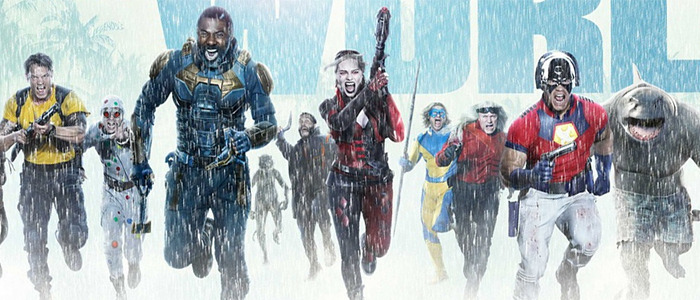Why John Ostrander's 'Suicide Squad' Run Is Essential Reading Before James Gunn's Movie [Set Visit]
Writer/director James Gunn's long-awaited comic book movie The Suicide Squad debuts one month from today, which gives comic fans plenty of time to brush up on some source material before seeing what Gunn has up his sleeve. One particular stretch of comics you should hone in on is writer John Ostrander's 66-issue run from 1987-1992, which helped modernize the team after their initial Silver Age appearance and served as a big creative inspiration for Gunn. Here's how reading John Ostrander's Suicide Squad comics will help you prepare for The Suicide Squad.
A (Very) Brief Overview
The first iteration of the Suicide Squad debuted in the pages of DC's The Brave and the Bold in 1959, in which a team was assigned to battle a "Red Wave" that was boiling the ocean as it headed toward a seaside resort. The comic didn't achieve much popularity, and the team essentially faded into obscurity...until Ostrander came into the picture decades later.
He took over writing Suicide Squad comics in May of 1987, and kicked off his run with a story about the ruthless Amanda Waller sending Rick Flag and a new batch of Task Force X supervillains into an impregnable mountain fortress called Jotunheim to defeat a group of terrorists. Gunn's new film features his own version of the squad heading into Jotunheim, a Nazi-era prison/laboratory. Despite that surface similarity, producer Peter Safran noted during our set visit that this upcoming movie relied heavily on Ostrander's sensibilities while still being a "completely original story" from James Gunn.
"I'm a huge fan of the original John Ostrander run of Suicide Squad, which is he created the whole Dirty Dozen-esque supervillains," Gunn said on the set. "And I don't think of [this movie] so much as an interpretation of what he wrote, but I do think of it as a continuation of what he did." Gunn tried to recapture some of Ostrander's style, which unsurprisingly ended up earning him an R rating for this film. The director has exceptionally high praise for Ostrander's work, calling his stretch from '87-'92 "one of the greatest superhero runs of any comic book series."
While it launched Captain Boomerang and Deadshot to popularity (relatively speaking, anyway – they're still comparatively obscure characters when juxtaposed against Batman, Wonder Woman, and the like), fans will also appreciate seeing the first appearance of Barbara Gordon as Oracle, the tech-savvy "eye in the sky" persona she adopted after being shot by the Joker during the events of The Killing Joke.
A Human Touch Amid the Chaos
One of the things Ostrander's Suicide Squad comics were known for was the way he humanized the characters, providing insight into their mental states even while knowing that the premise of the team is that they're all expendable. That type of care and genuine interest in his characters' inner lives feels akin to what Gunn did with the Guardians of the Galaxy movies for Marvel Studios – especially with Rocket Raccoon, a damaged experiment subject to whom Gunn deeply relates.
As for the somewhat ridiculous lineup of characters in this new movie (Polka-Dot Man hive, rise up!), Gunn says, "When [Ostrander] was first putting this team together, he was only able to get certain characters. And it really was for him the fun of taking these characters that weren't as well-known and developing them in a real way." Just because there's comedy mixed into a big-budget comic book film doesn't mean there can't also be an honest exploration of characters' needs and wants.
Reading Ostrander's comics likely won't give you any early access to specific plot details in Gunn's forthcoming movie, but if you want to familiarize yourself with the vibe and tone that Gunn is striving to capture, diving into the pages of those comics is a great way to achieve that.


